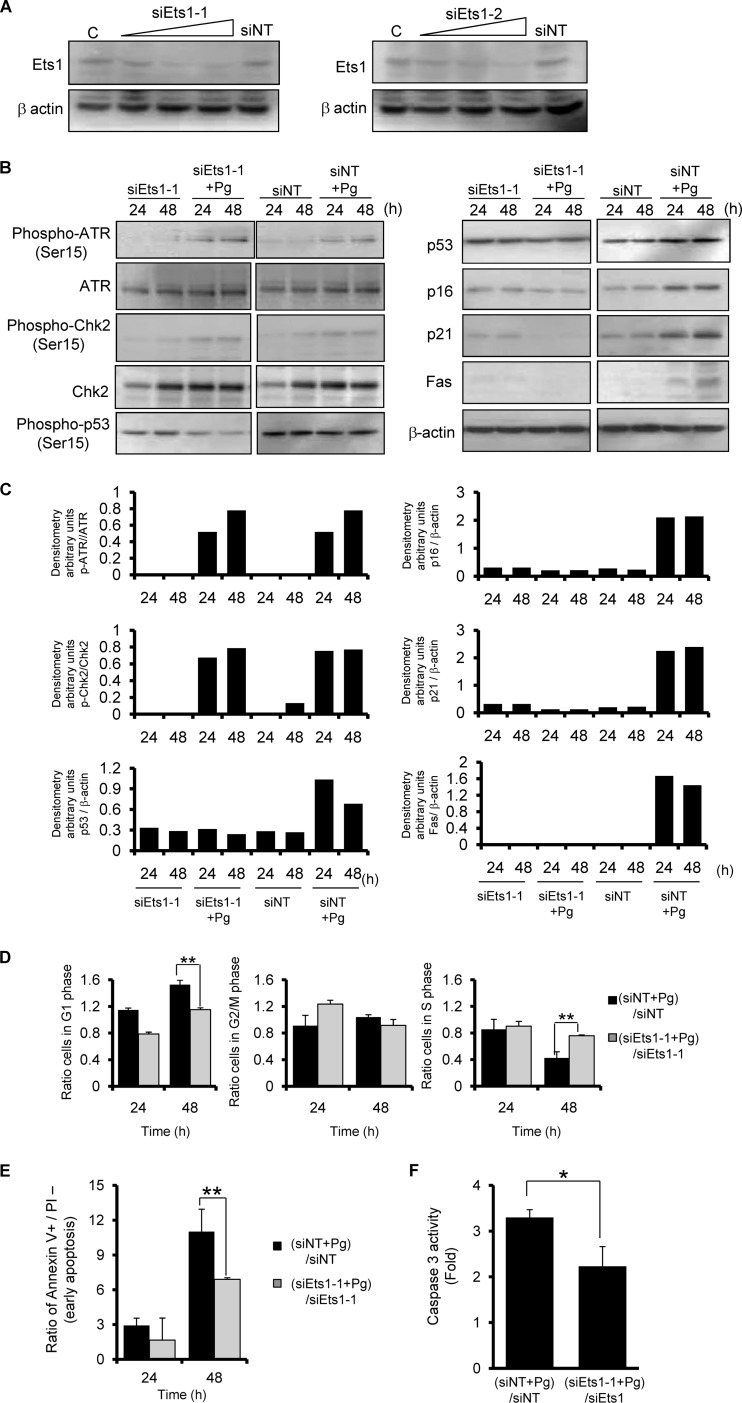Fig 6.
siRNA knockdown of Ets1 suppresses P. gingivalis-mediated G1 arrest and apoptosis. HTR-8 cells were transfected with siRNA for Ets1 (sipEts1-1 and -2) or with a nontarget control (siNT). (A) Immunoblot with anti-Ets1 or β-actin antibodies at 48 h after transfection and with β-actin as a loading control. (B) siRNA knockdown cells were infected with P. gingivalis at an MOI of 200 for 24 and 48 h. Expression profiles of signaling molecules were examined by immunoblotting. β-Actin was included as a loading control. (C) Densitometric analysis of blots of phosphorylated and total proteins, expressed in arbitrary units. Data are representative of three independent experiments. (D) siRNA knockdown cells were infected with P. gingivalis as described for panel B, and the cell cycle distribution was determined using flow cytometry. (E) siRNA knockdown cells were infected as described for panel B, followed by staining with annexin V and propidium iodide (PI), and analyzed using flow cytometry. (F) siRNA knockdown cells were infected with P. gingivalis for 48 h as described for panel B, and caspase 3 activity was measured. Fold changes were calculated as described for panel D. Error bars indicate standard deviations (n = 3). * and **, P < 0.05 and P < 0.01 (Student's t test) compared with the ratio of P. gingivalis-infected NT-siRNA control to NT-siRNA control.

